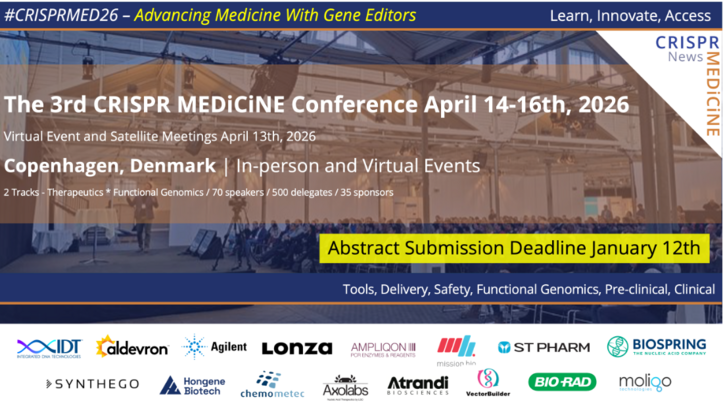Structure-guided discovery reveals ancient clade of Cas13 ribonucleases
CMN Intelligence - The World’s Most Comprehensive Intelligence Platform for CRISPR-Genomic Medicine and Gene-Editing Clinical Development
Providing market intelligence, data infrastructure, analytics, and reporting services for the global gene-editing sector. Read more...
Type VI CRISPR-Cas systems, of which Cas13 is the defining member, provide adaptive immunity in prokaryotes by targeting RNA transcripts of invading mobile genetic elements. Cas13-mediated RNA targeting occurs through the action of a Cas13 protein and its CRISPR RNA (crRNA), which function together as an RNA-guided ribonuclease.
All Cas13s possess two higher eukaryotes and prokaryotes nucleotide-binding (HEPN) domains; these have been shown to dimerise intramolecularly to form the active site in response to target-transcript recognition.
HEPN domains, which are not exclusive to Cas13, are known for their high diversity and poor sequence conservation, which impedes standard homology searches and makes evolutionary analyses challenging. As a result, compared to other widely study Cas endonucleases, e.g., Cas9 and Cas12, few distinct Cas13 subtypes have been identified to date, and their evolutionary origins remain poorly understood.
To address those challenges, a team led by Nobel Laureate Jennifer Doudna built an automated structural-search pipeline that combines the speed of machine learning-based search methods with the sensitivity of traditional structure alignment programmes. Using this pipeline, they identified an ancestral clade of Cas13 (Cas13an) and traced Cas13 origins to defence-associated ribonucleases (1).
The team shows that in spite of its small size compared to other Cas13s, Cas13an can selectively target green fluorescent protein (GFP) transcripts when co-expressed with GFP-targeting crRNAs in E. coli, and that the HEPN domain is essential for this activity.
Cas13an also provided defence against diverse bacteriophages when co-expressed with selected phage-targeting crRNAs in E. coli. The study revealed that Cas13an employs a single active site for both CRISPR RNA processing and RNA-guided cleavage in contrast to the larger Cas13s, revealing two modes of activity for the ancestral nuclease domain.
The findings, which were published in Science today, add to the current understanding of CRISPR-Cas evolution and should create new opportunities for precise RNA editing.
References
1. P. H. Yoon et al., Science 10.1126/science.adq0553 (2024).
**CRISPRMED25 - The 2nd CRISPR Medicine Conference, Copenhagen, Denmark, April 7-11, 2025**
Learn about the latest discoveries in CRISPR Medicine at the CRISPRMED25 Conference in Copenhagen, Denmark, April 7-11, 2025.
Tags
CLINICAL TRIALS
Sponsors:
Base Therapeutics (Shanghai) Co., Ltd.
Sponsors:
Base Therapeutics (Shanghai) Co., Ltd.







